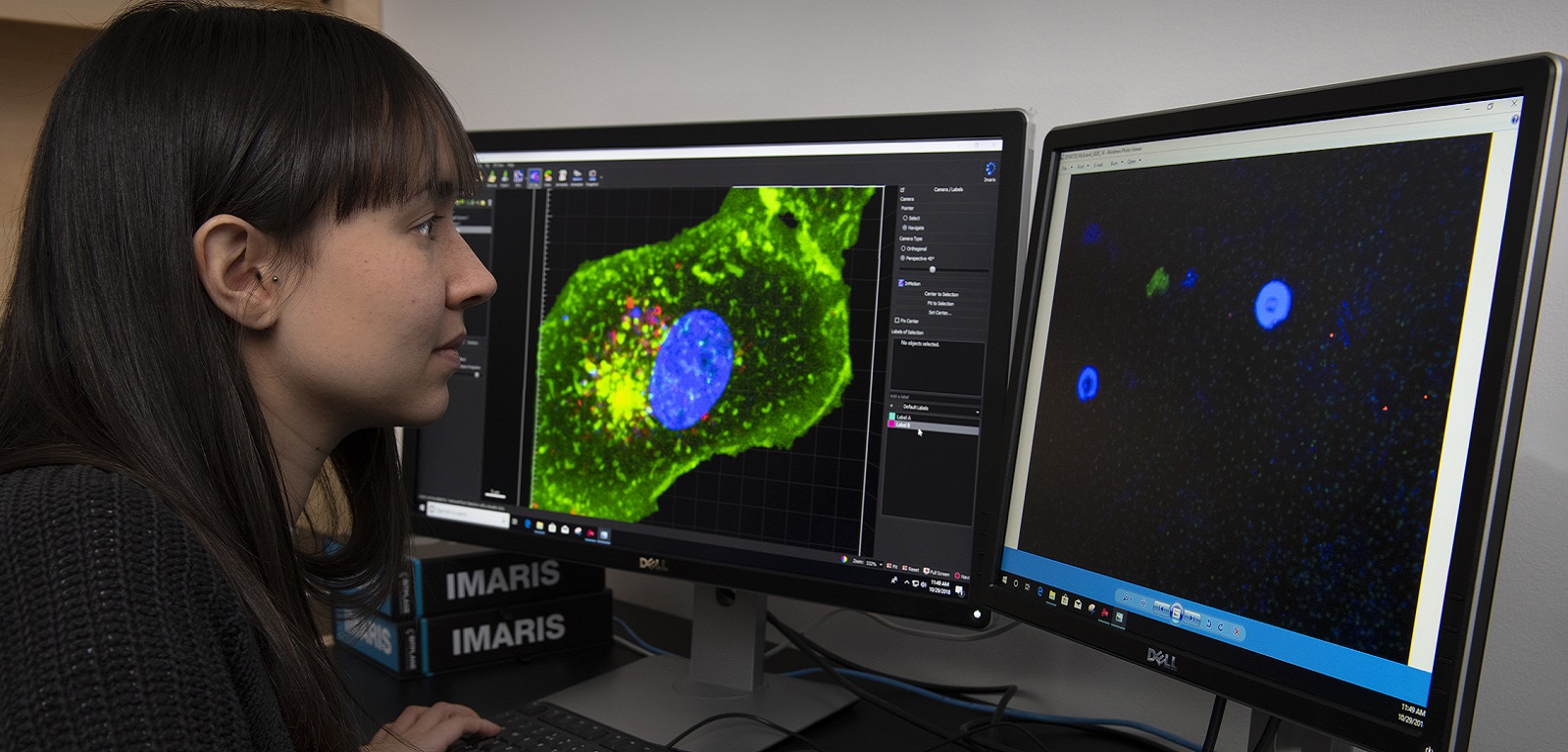Image Analysis is becoming more and more important to allow quantitative data analysis in microscopy. The Advanced Imaging CTU has three workstations and professional softwares available for Image Analysis.
Imaris 10.0.0 Bitplane
The Imaris 10.0.0 Bitplane is professional software that can be used for visualization and analysis of 3D and 4D (3D plus time) imaging files recorded with different instruments. It can read imaging files formats like lif, nd2, ims, tif and can open big data sets around 50GB
It can analyse surfaces, volumes, spots, filaments, cells, co-localization analysis.
Leica- LAS X
- 3D visualization
- 3D deconvolution
- Area analysis and ROI’s analysis
- Colocalization analysis
FIJI-Image J
An open source software inspired by NIH Image. Fiji is Image J with many plugins for scientific image analysis.
Using the software - Getting started
Using the software - Informatics faq
Nikon-NIS-elements
NIS-Elements Viewer is a software that open and analyse image files acquired using Nikon microscopes.
Key Features
- Analysis of live cell dynamics, ,morphology , object tracking
- 2D and 3D deconvolution eliminate haze and blur of the acquired fluorescence images
- 3D visulaization
- Histogram/Intensity/surface plot measurement
- ROI statistics, pixel measurements such as area, maximum or minimum fluorescence intensity for users defined ROI’s.
- Object counting and classifier, pixel classifier classifies each pixel in the image and intensity across the whole image
- General image analysis
Related Links
AngioTOOL
AngioTool is a software for quantitative analysis of angiogenesis.
It provides free, open source tools for quantitative assessment of various vessel morphometric and spatial parameters including vessel length and density, branching index, lacunarity, etc.
Key features
- Vessel diameter and Vessel intensity controls
